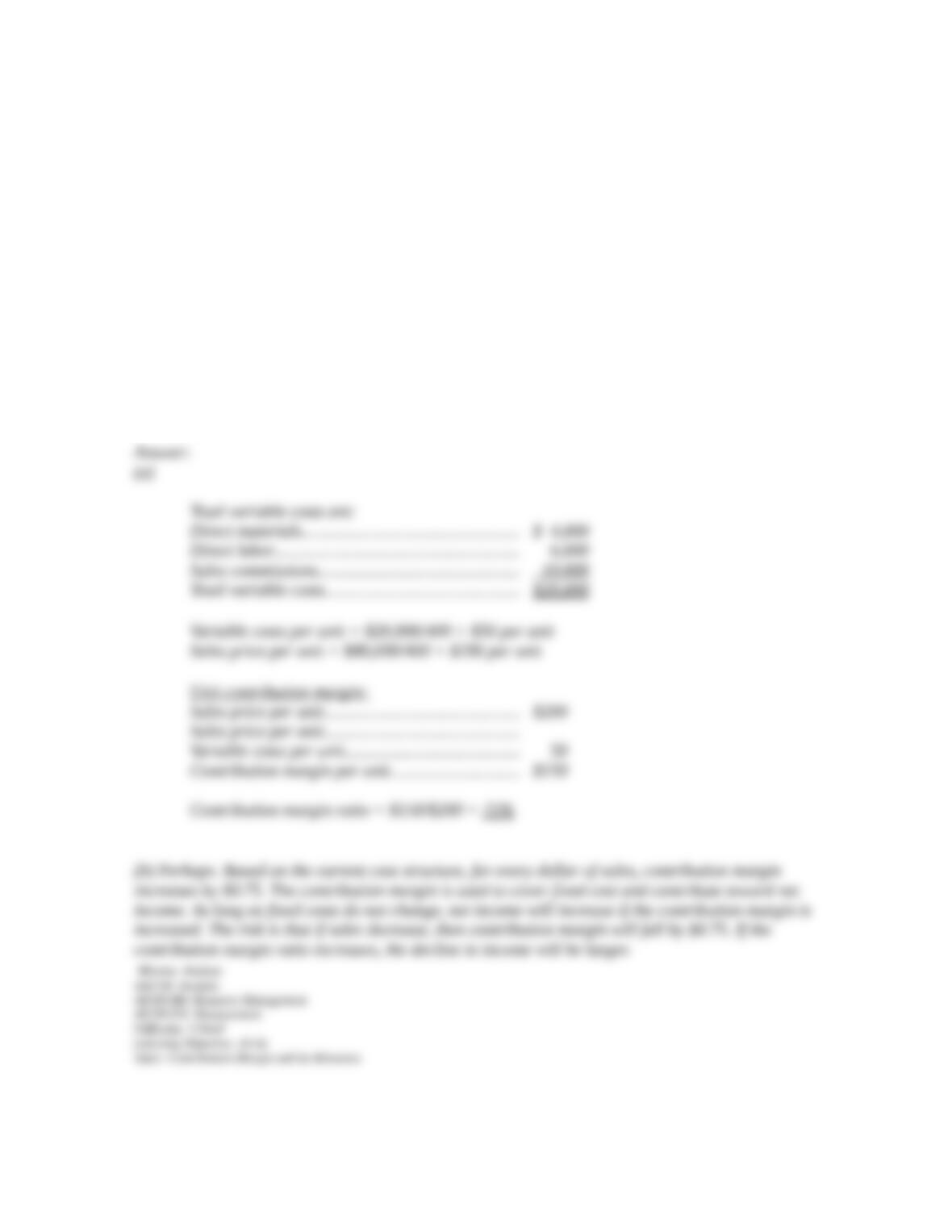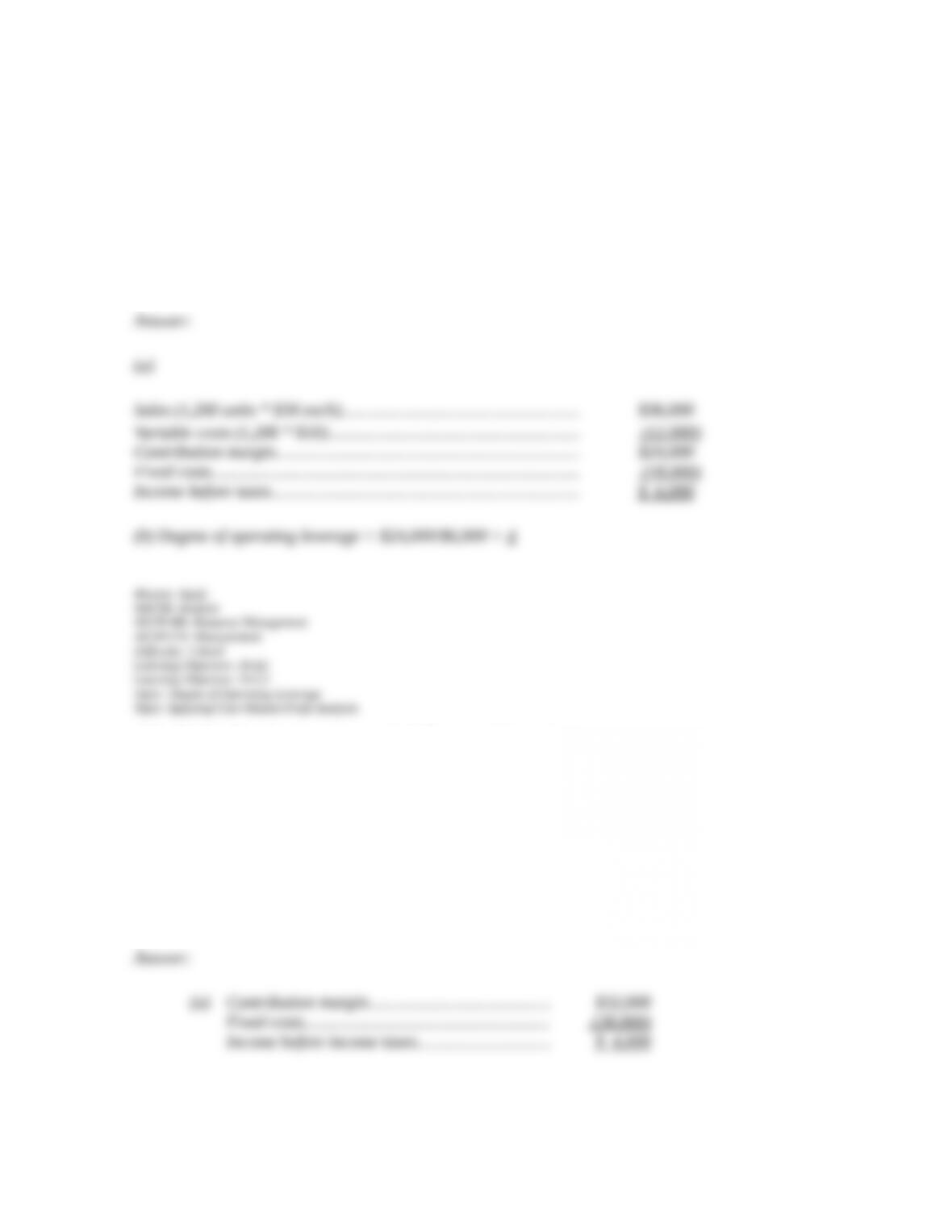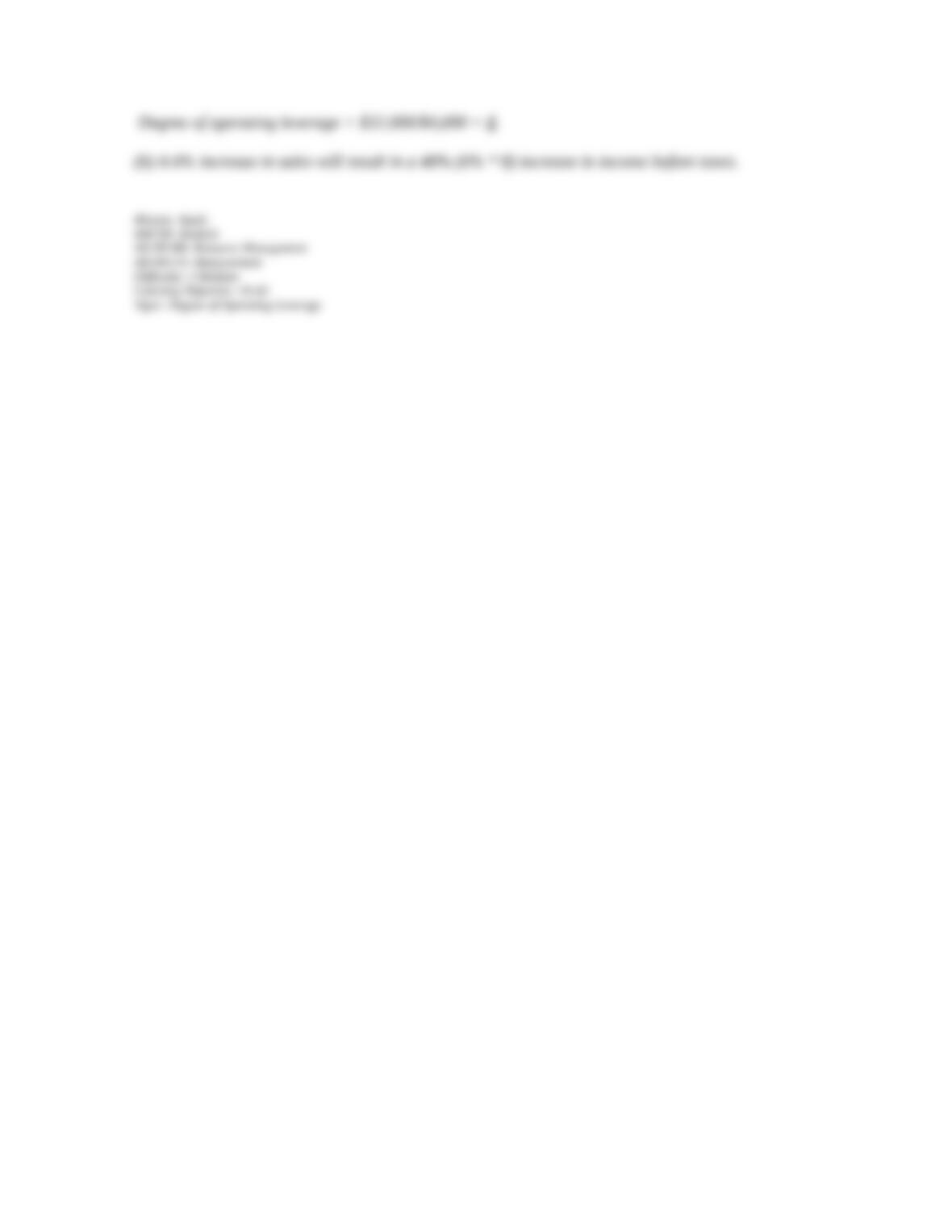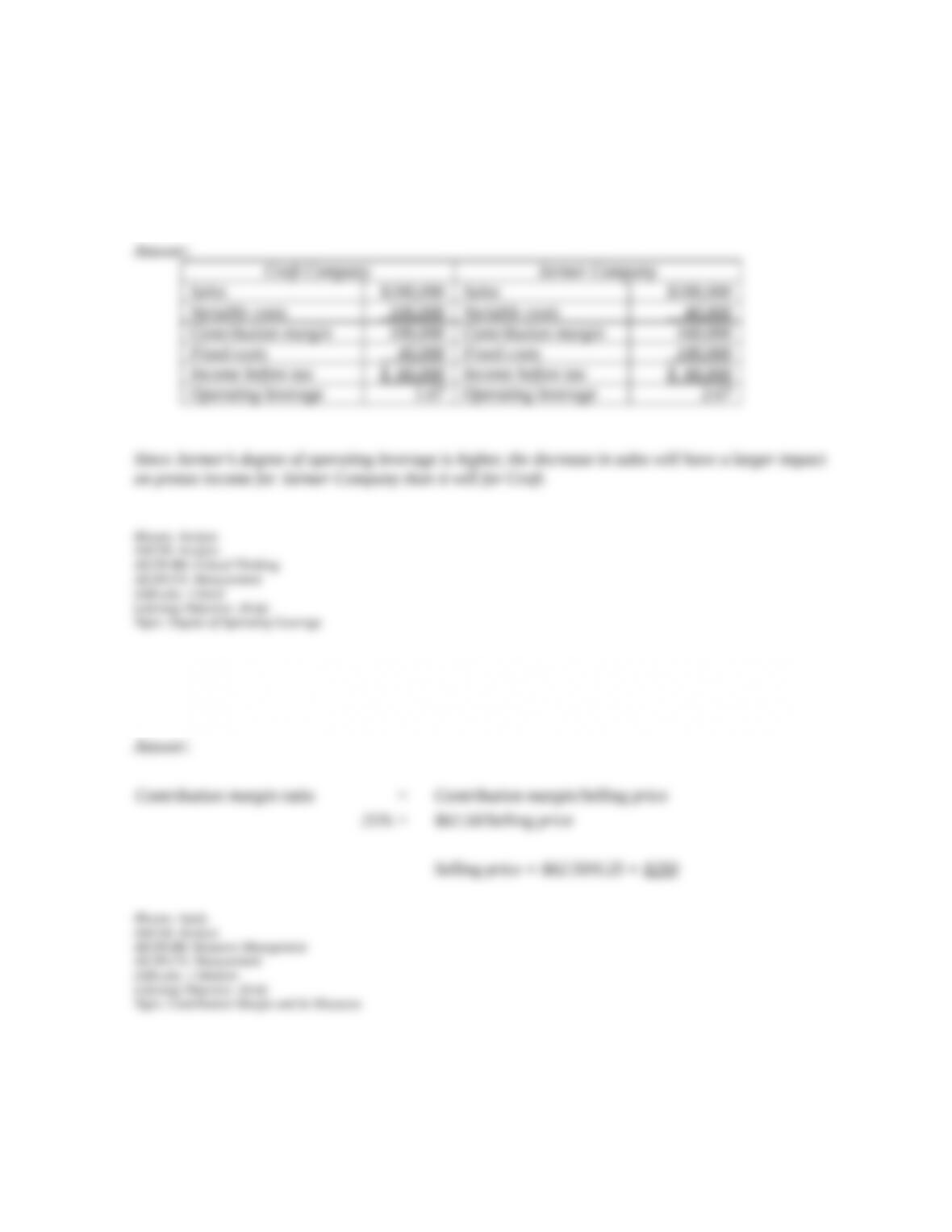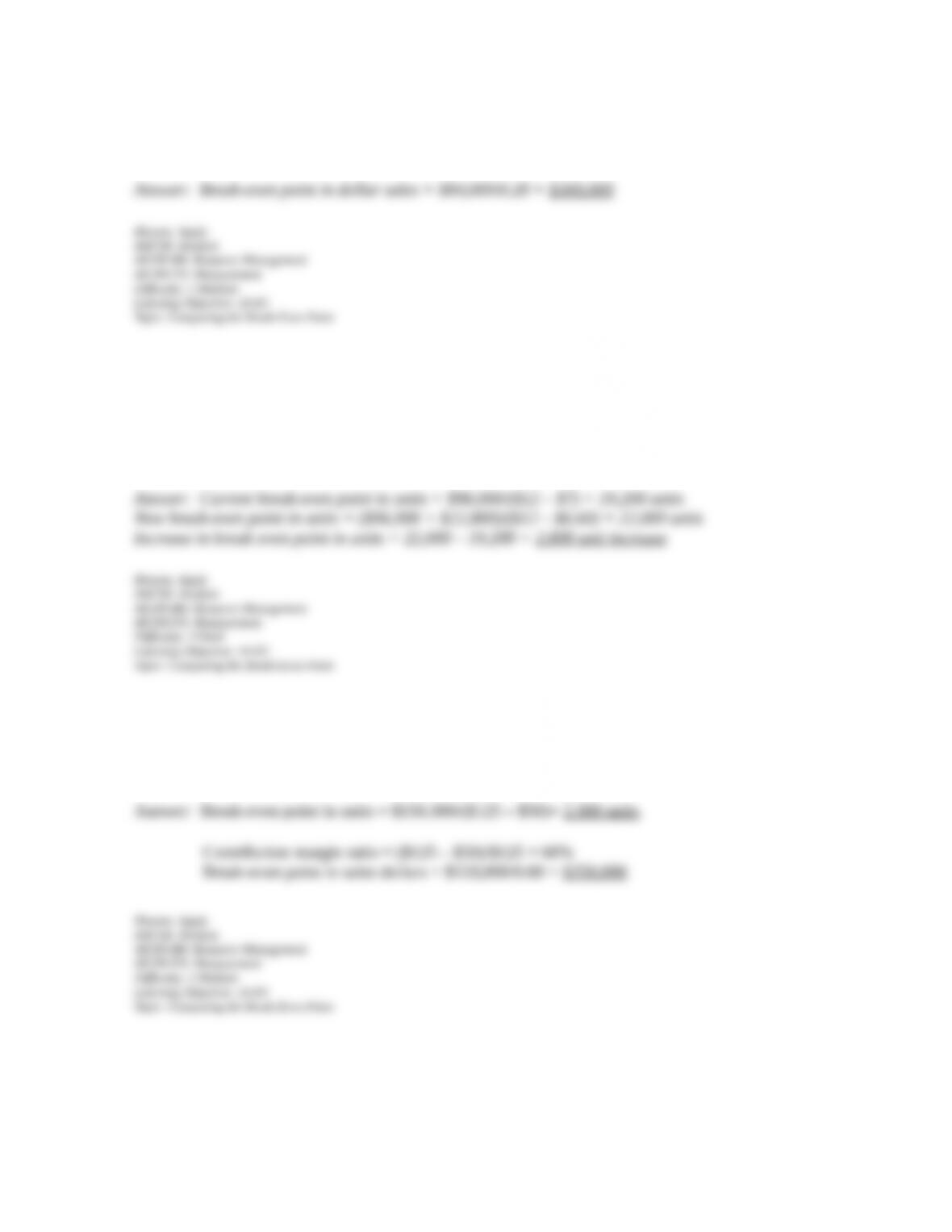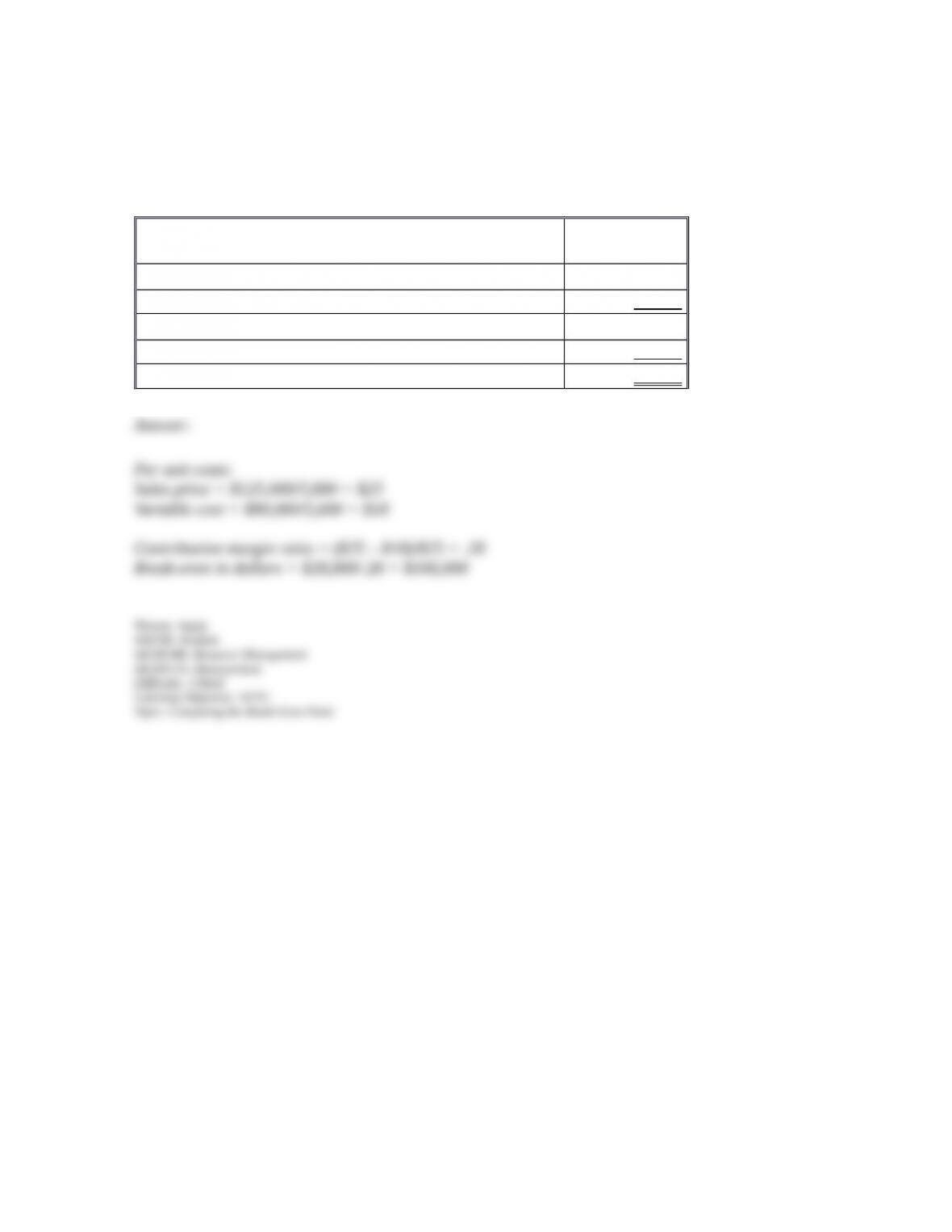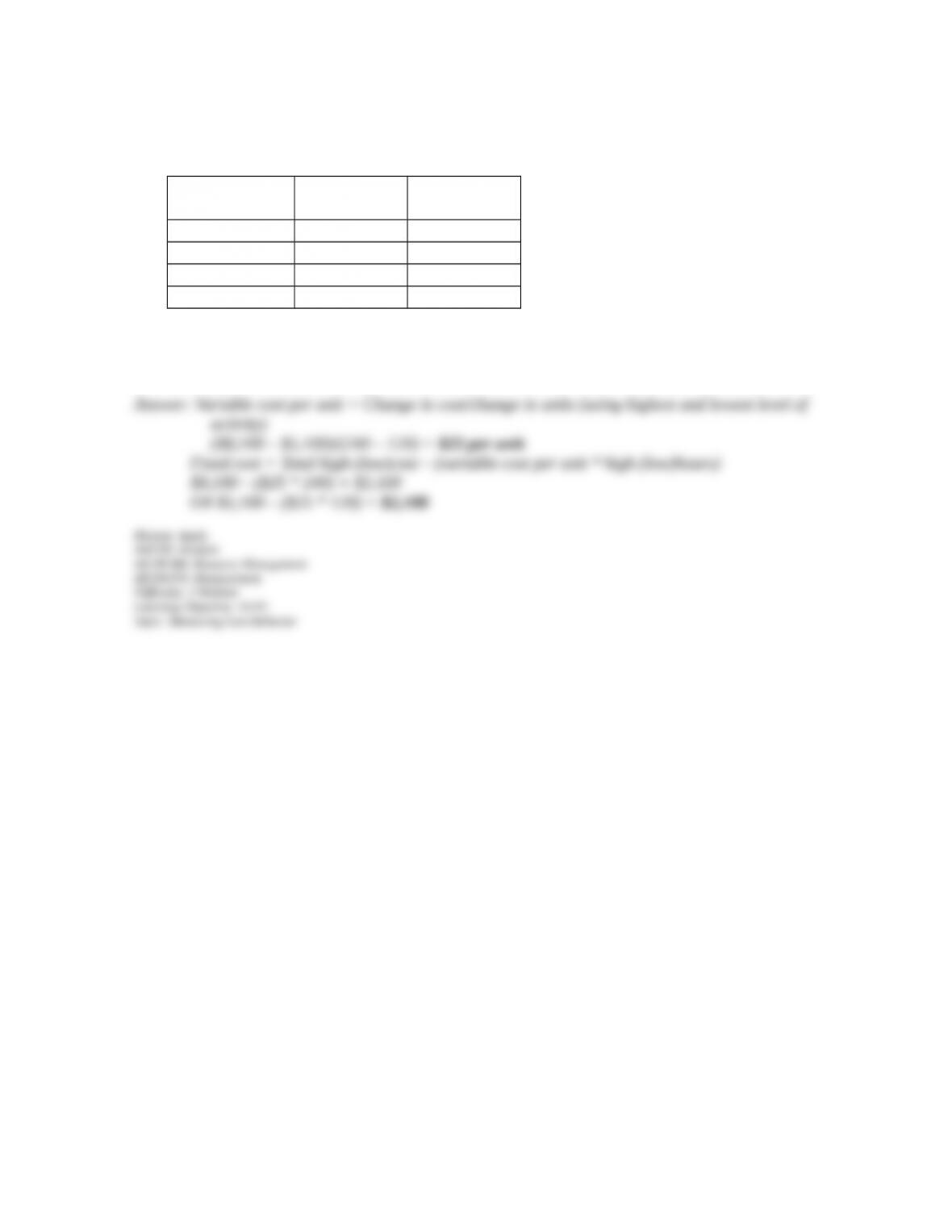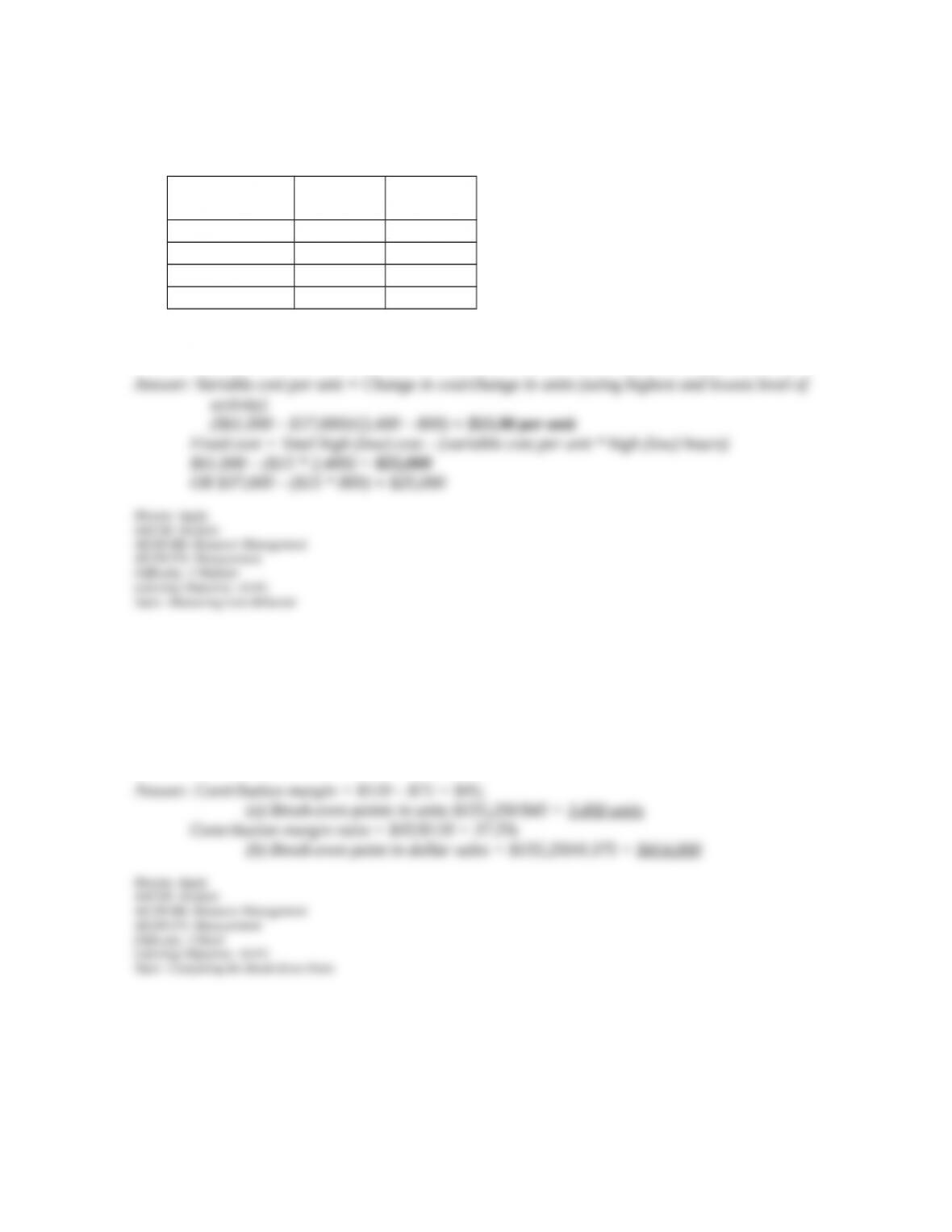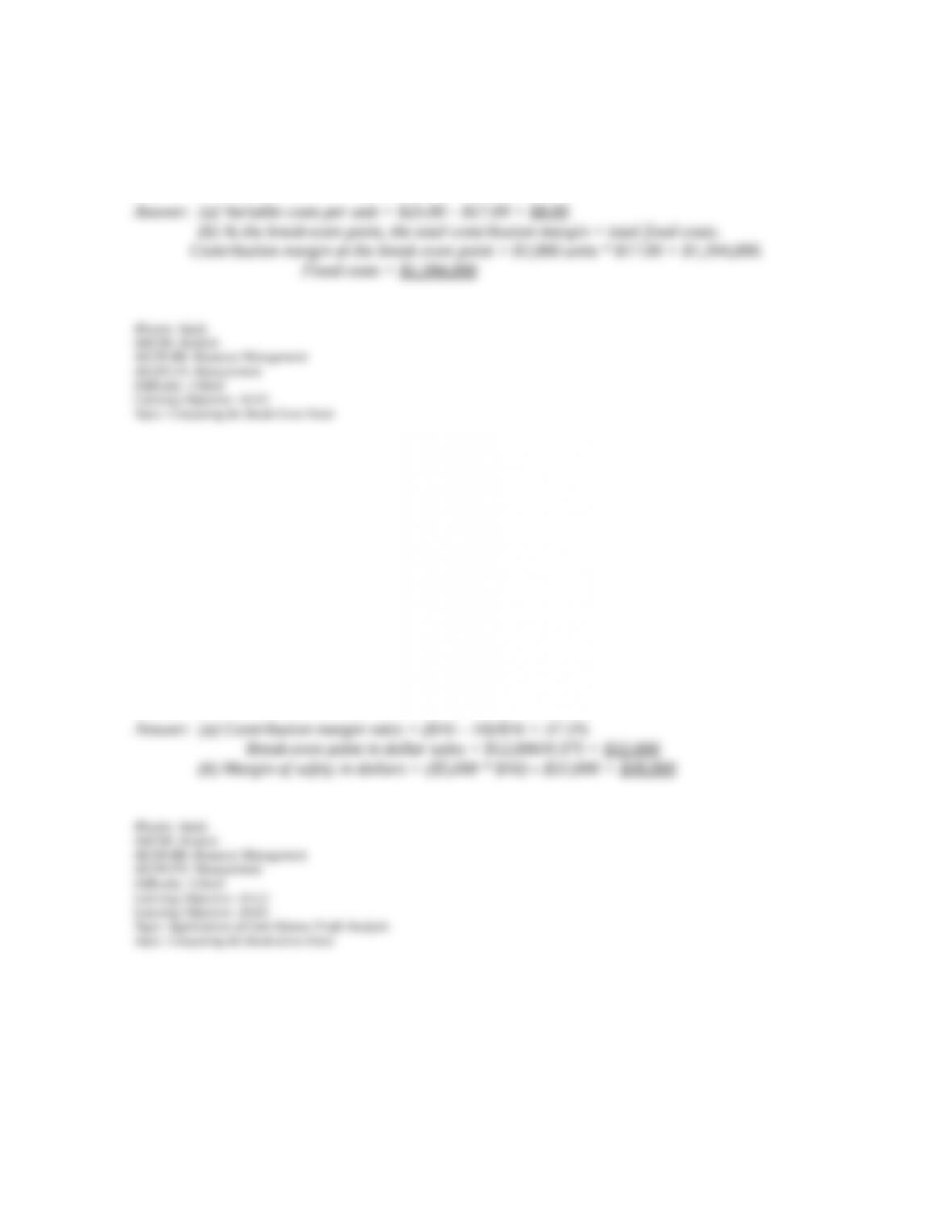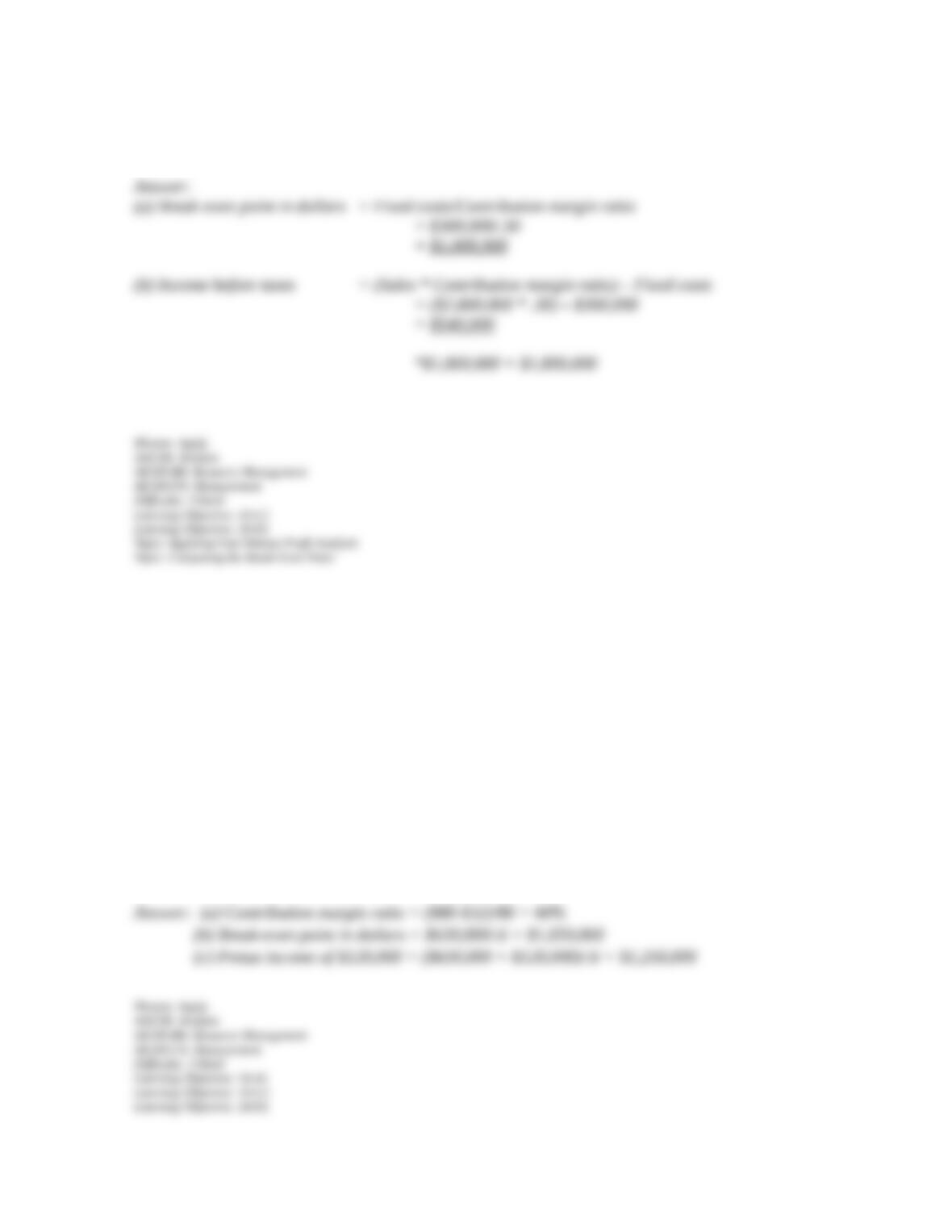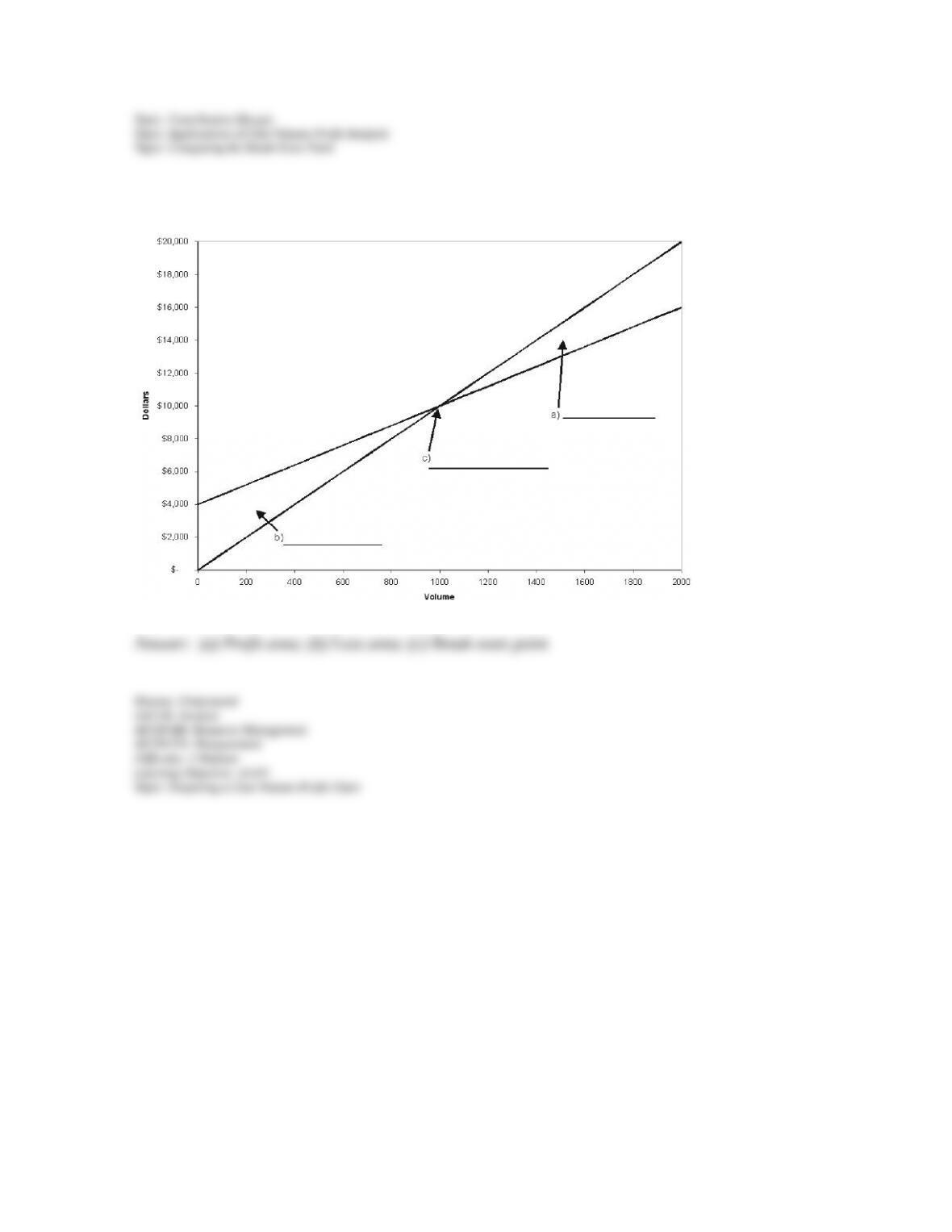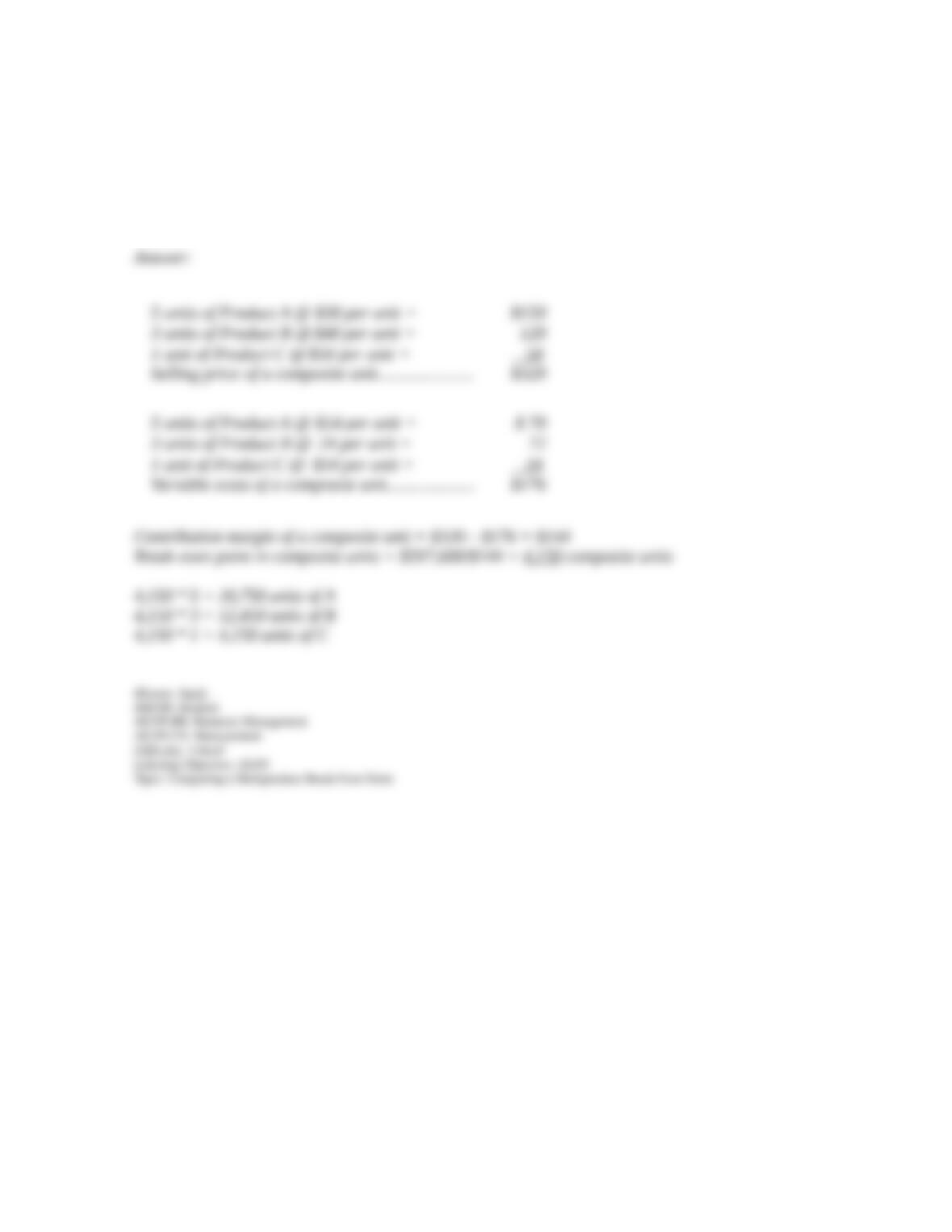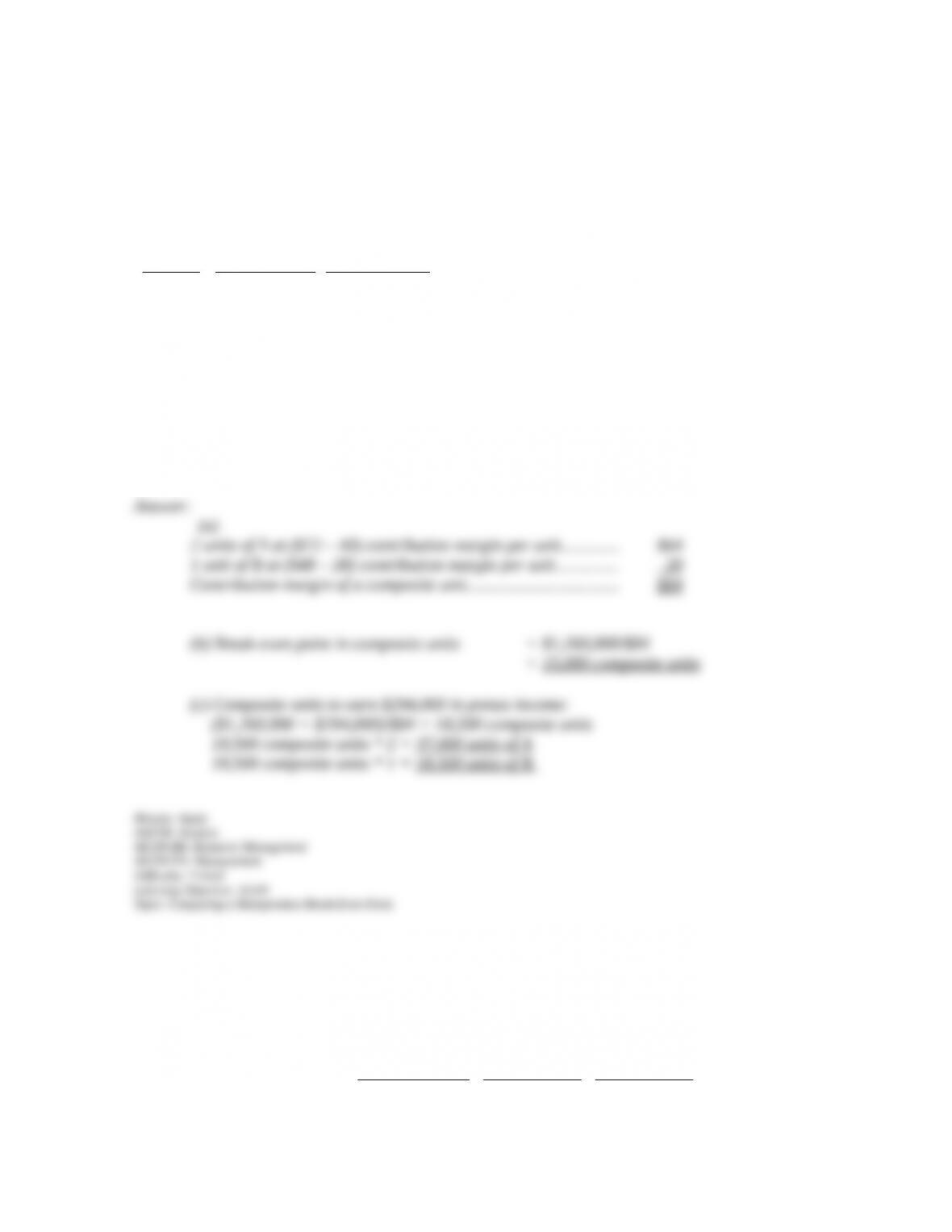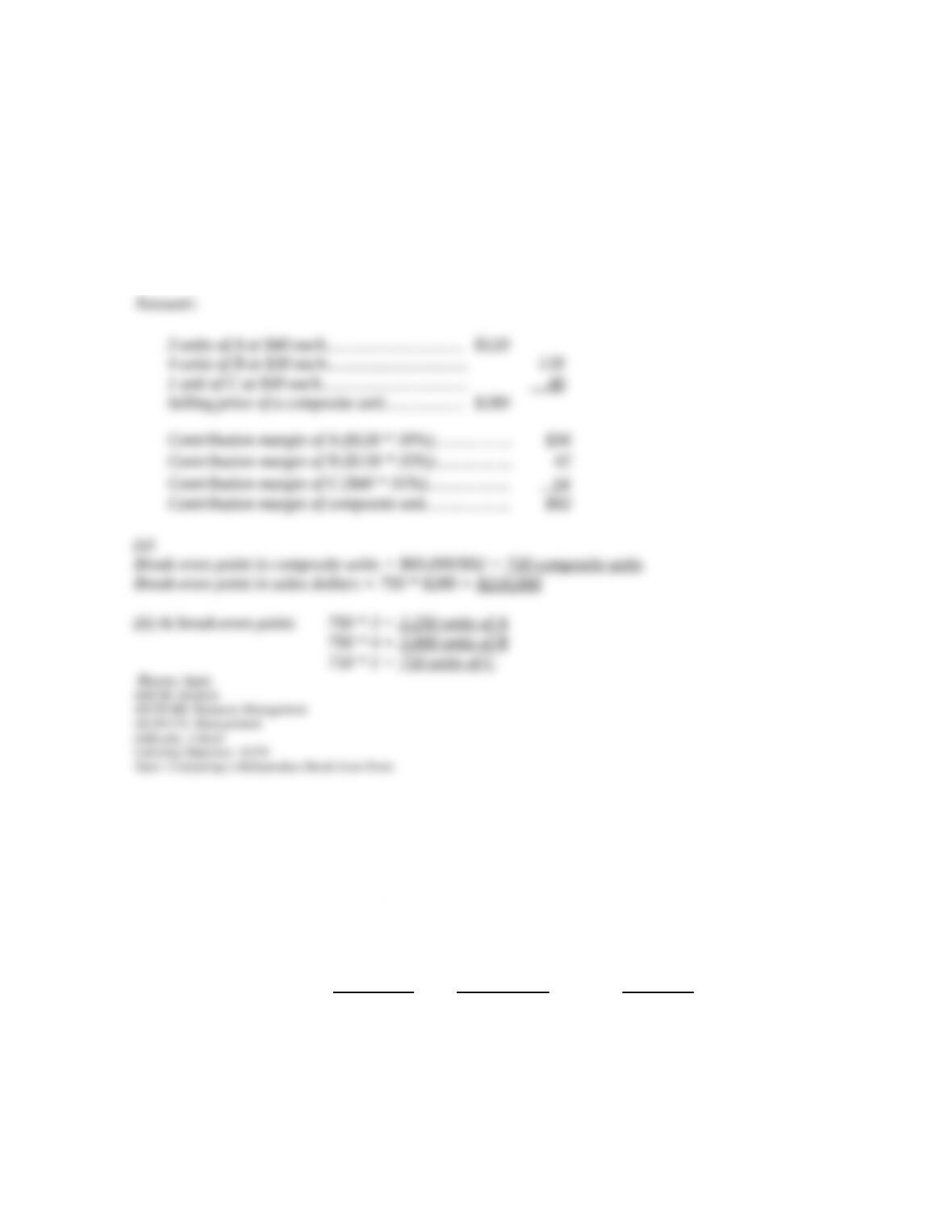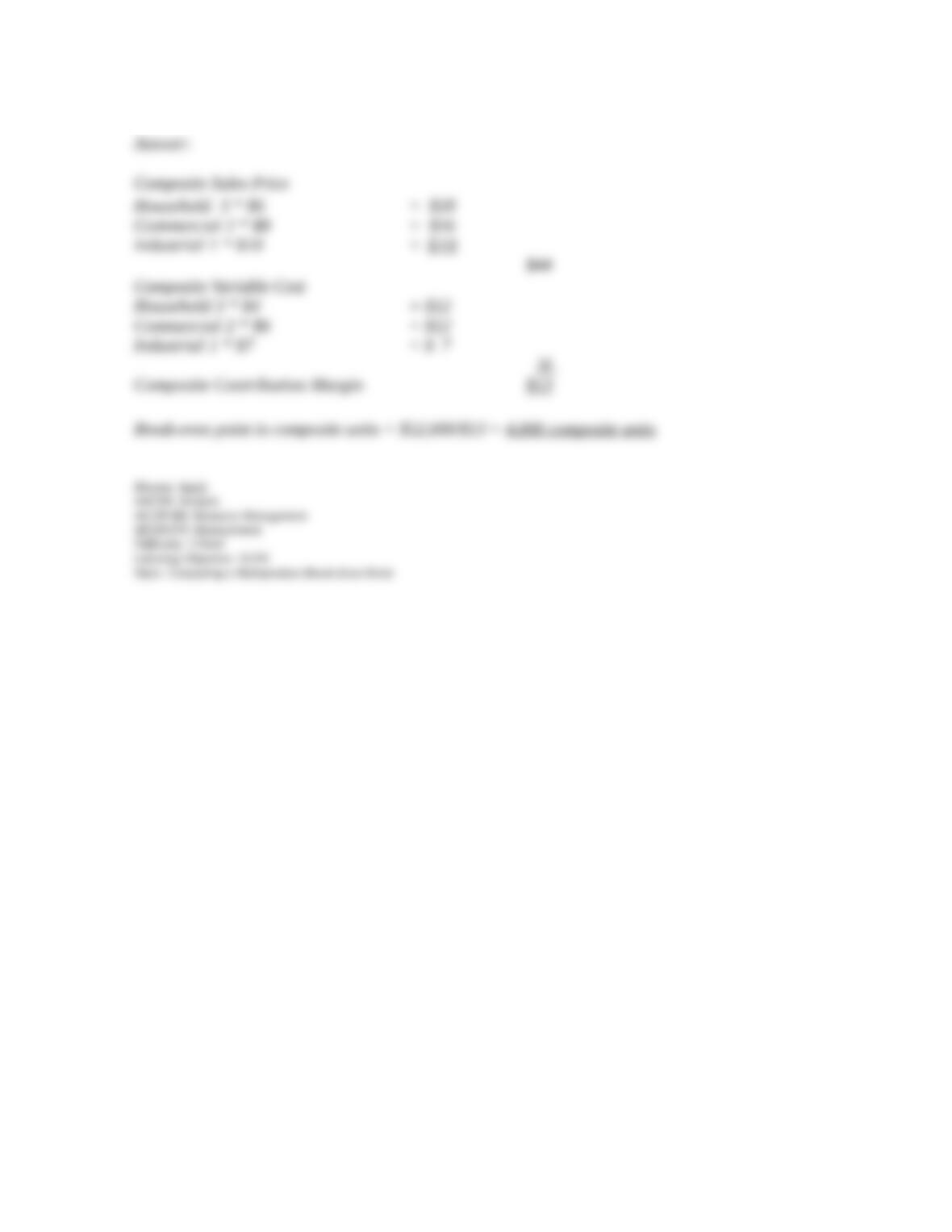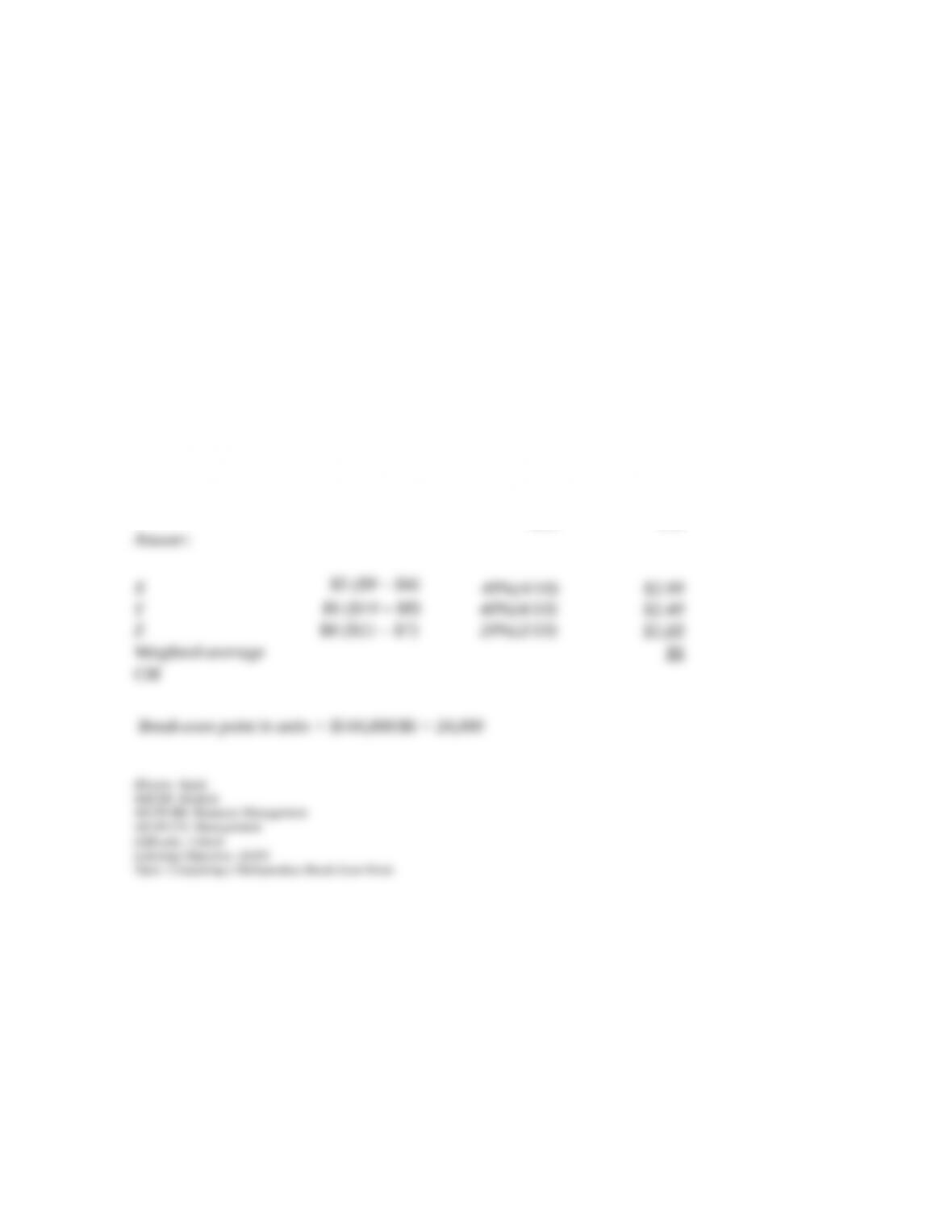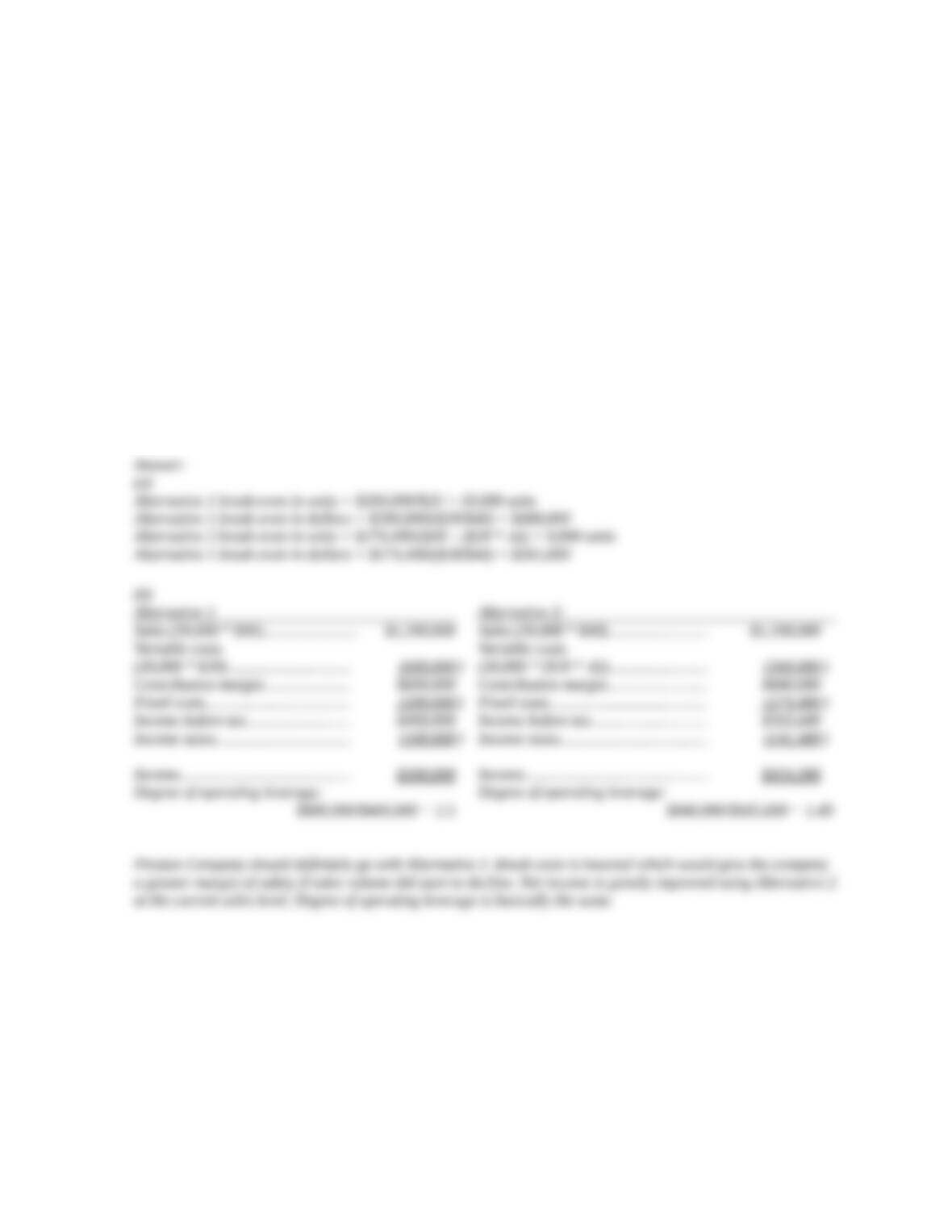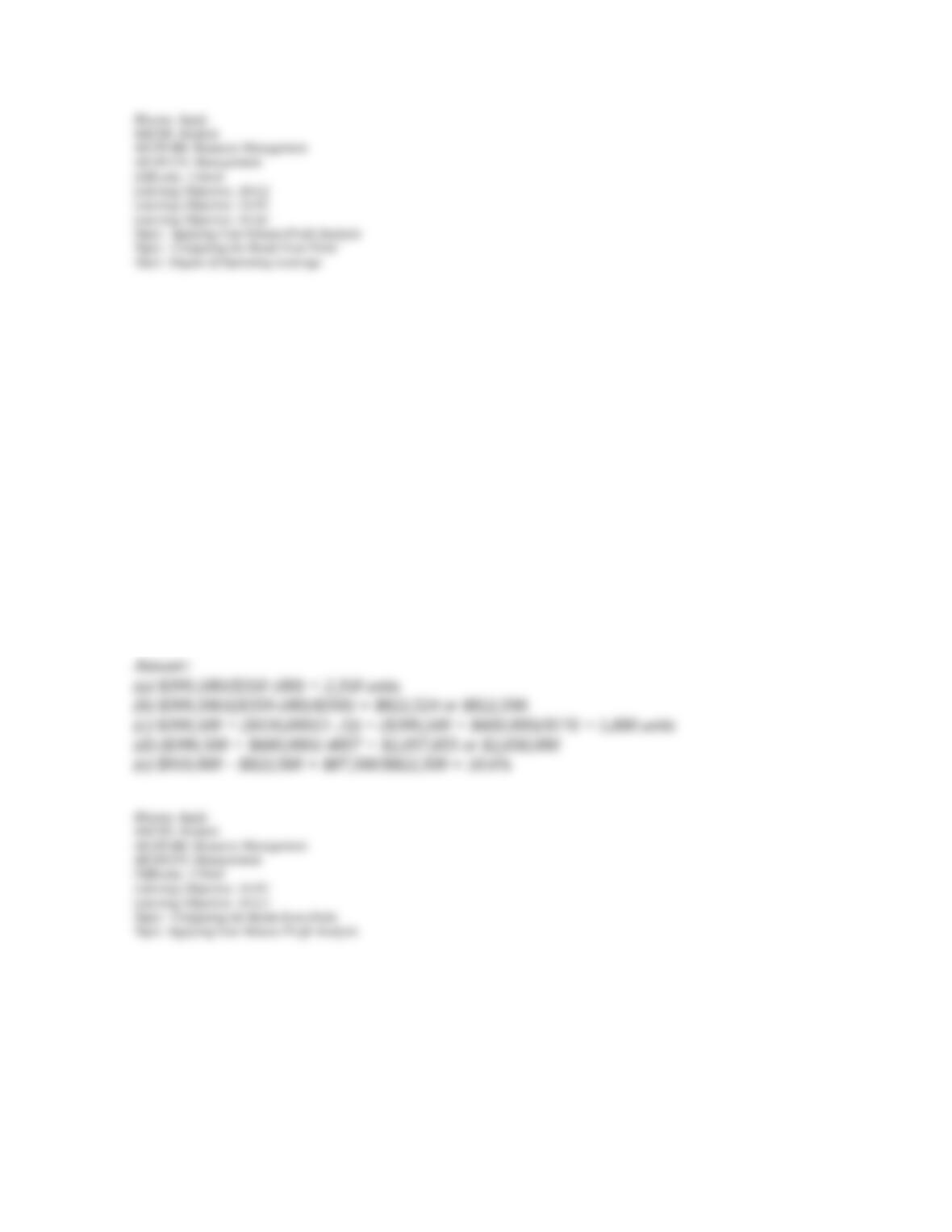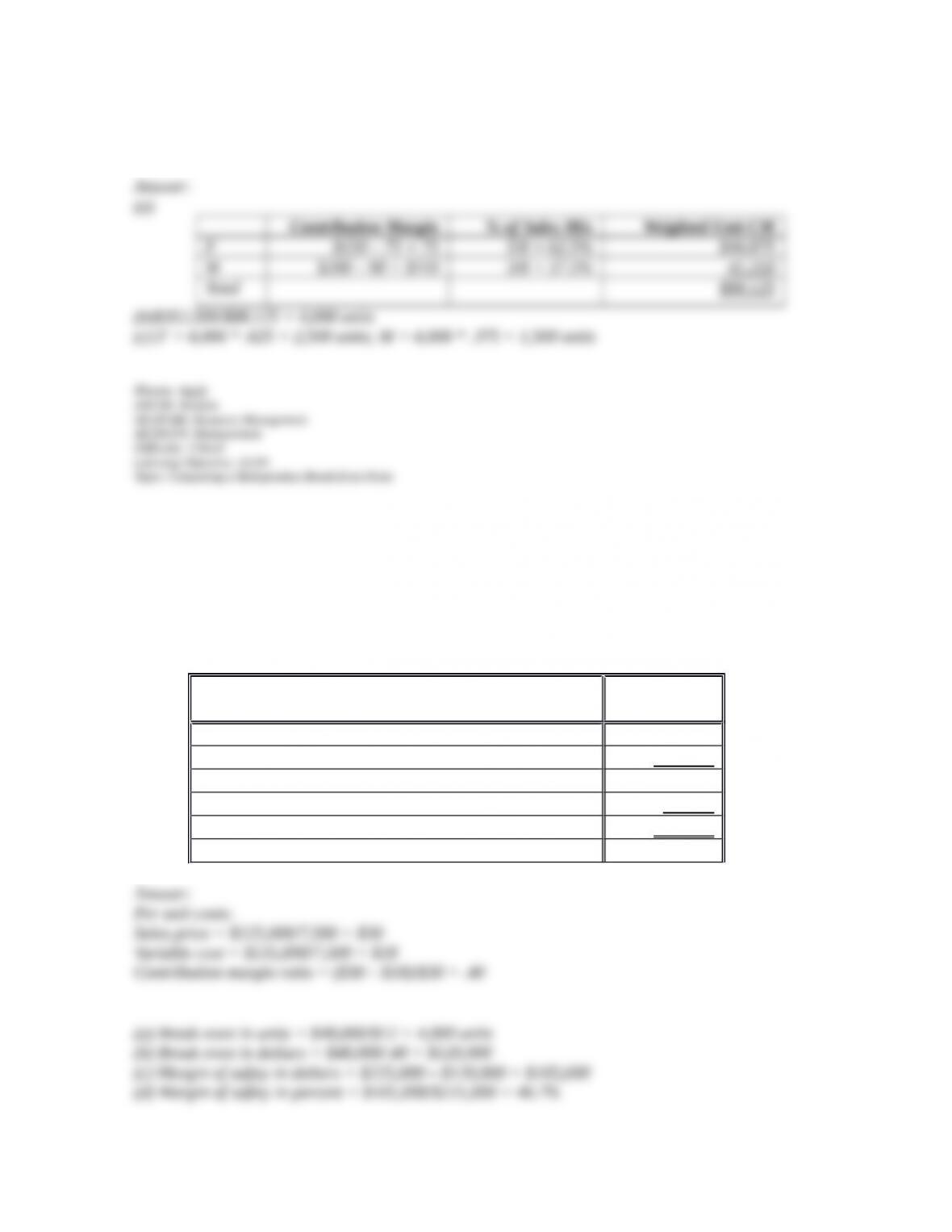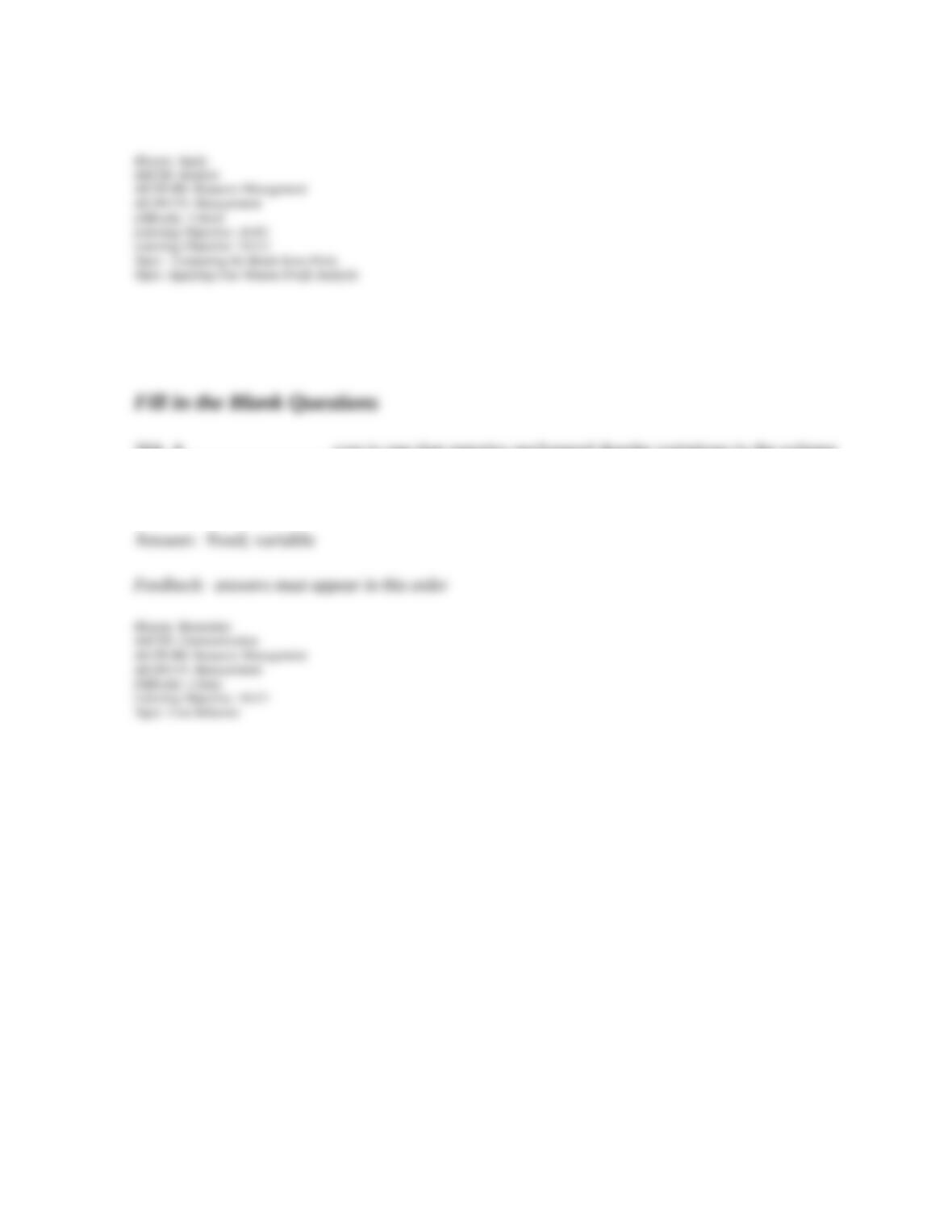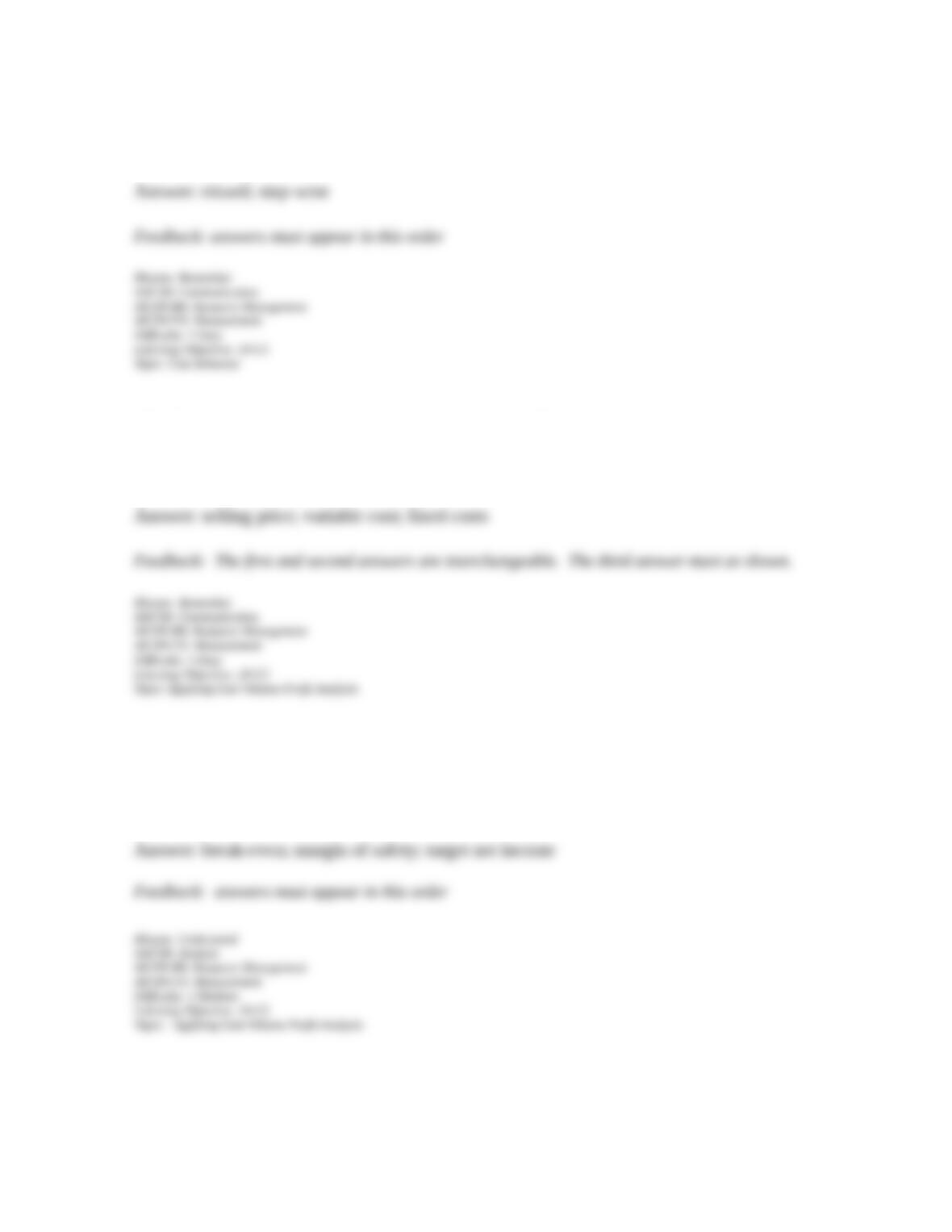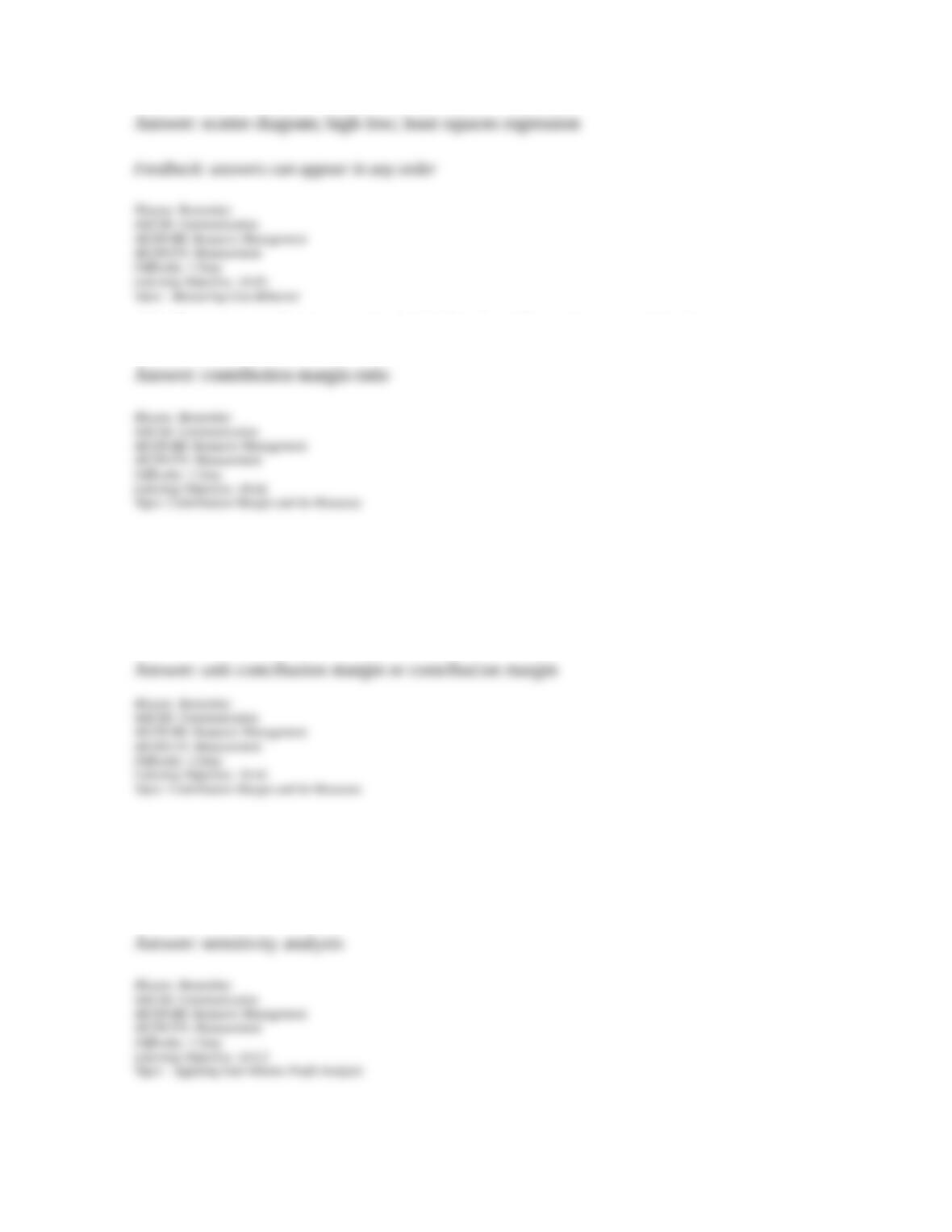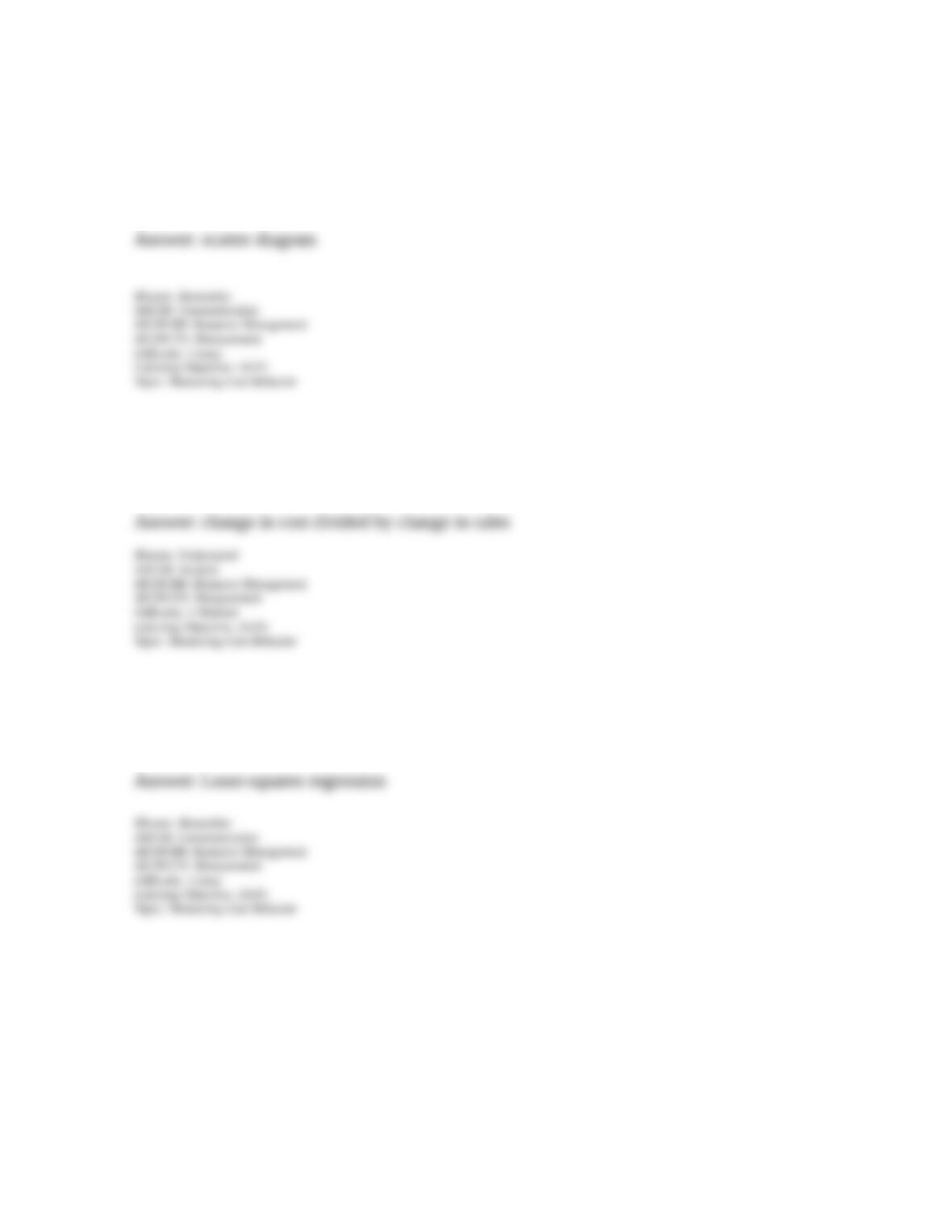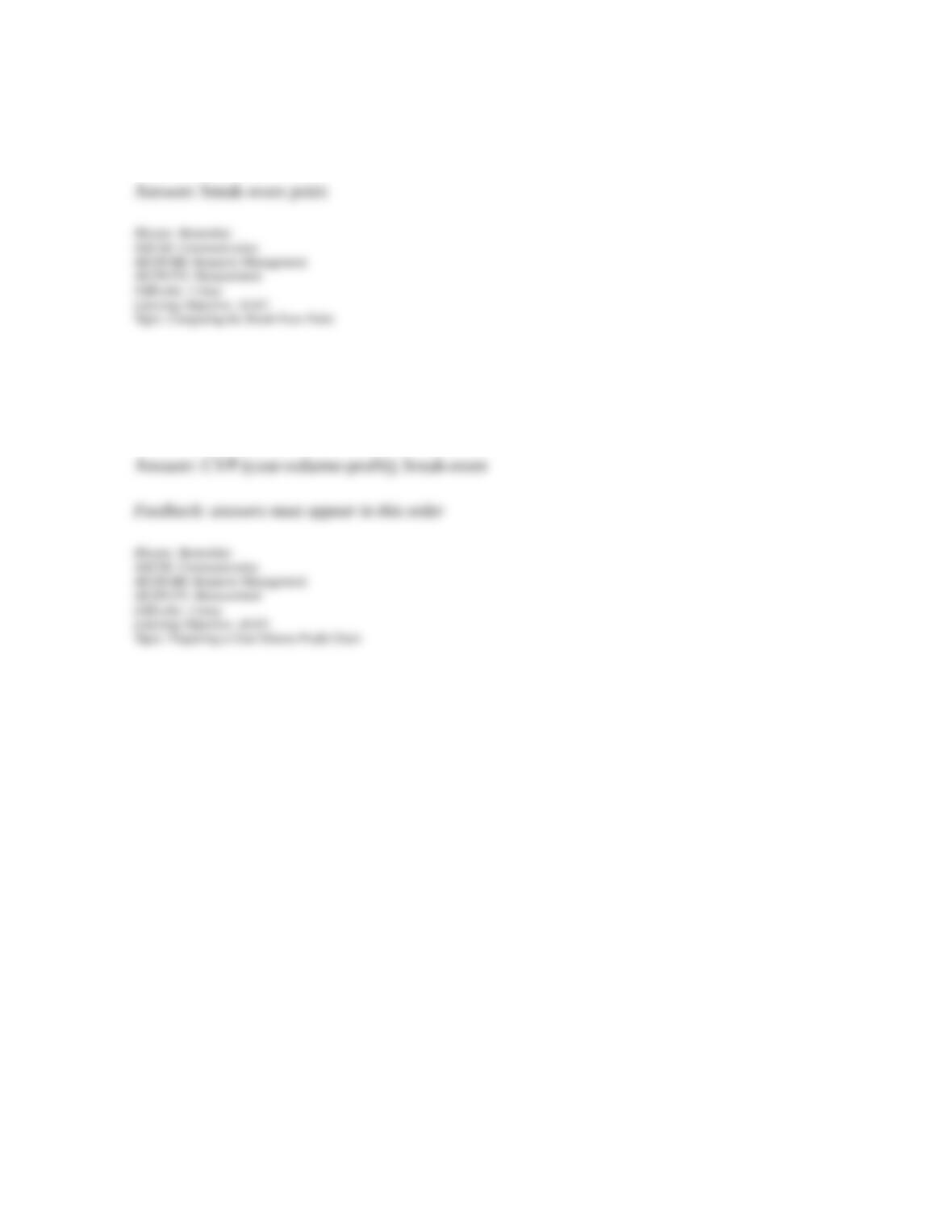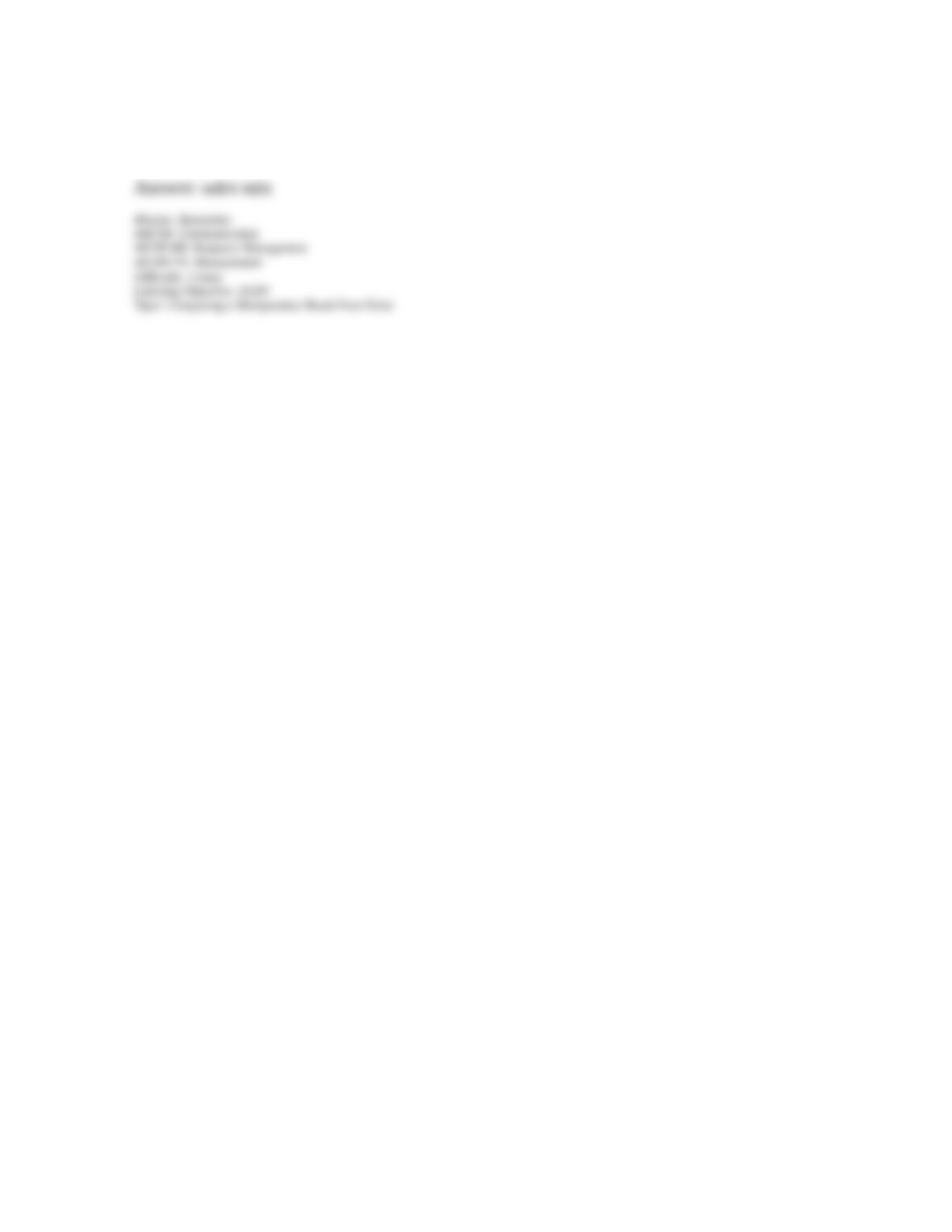145. Shown below are terms or phrases preceded by letters a through j followed by a list of
definitions. Match the terms or phrases 1 through 10 with the correct definitions by placing
the letter of the term or phrase in the answer space provided at the beginning of each
definition.
(a) Mixed cost
(b) Fixed cost
(c) Contribution margin per unit
(d) Curvilinear cost
(e) Variable cost
(f) Step-wise cost
(g) Relevant range of operations
(h) Estimated line of cost behavior
(i) Least-squares regression
(j) Cost-volume-profit analysis
__________(1) The amount that the sale of one unit contributes toward covering fixed costs
and generating profit.
__________(2) A cost that changes in total in proportion to changes in volume of activity.
__________(3) A cost that includes both fixed and variable cost components.
__________(4) A cost that changes as volume changes, but at a nonconstant rate.
__________(5) A line drawn on a graph to fit the relation between cost and unit volume.
__________(6) A statistical method for identifying cost behavior that is more precise than the
high-low method and a scatter diagram.
__________(7) A company's normal operating range of production volume; excludes
extremely high and low operating levels that are unlikely to recur.
__________(8) A cost that remains constant over limited ranges of volumes of activity but
shifts to another level when volume changes significantly.
__________(9) A business planning tool that helps managers predict how changes in costs
and sales levels affect profit.
__________(10) A cost that remains unchanged in total amount despite variations in the
volume of activity within a relevant range.
1. C; 2. E; 3. A; 4. D; 5. H; 6. I; 7. G; 8. F; 9. J; 10. B
Copyright © 2016 McGraw-Hill Education. All rights reserved. No reproduction or distribution without the prior written consent of
McGraw-Hill Education.
18-76

























































































